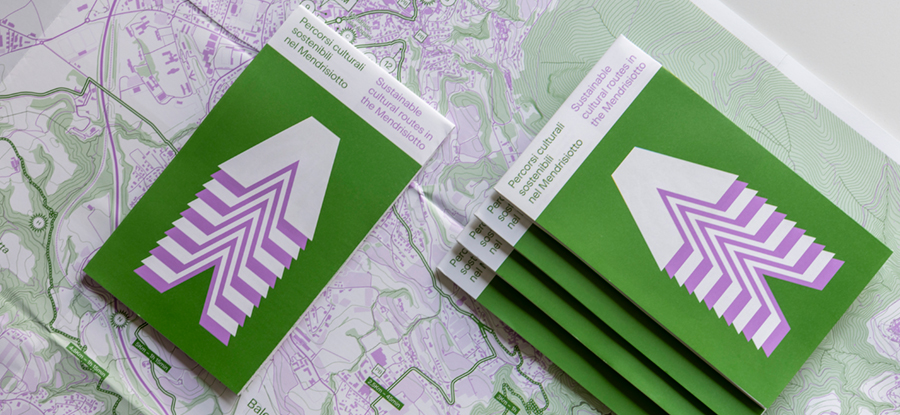POINTS OF INTEREST
1. Pesa pubblica Ligornetto
In 1855, Vincenzo Vela donated his sandstone sculpture “La Giustizia”, or “Lady Justice”, to his hometown, for installation at the public weighing station (“Pesa pubblica”). The allegorical personification, set on a hexagonal base and traditionally holding scales and a sword, evokes the ideals of freedom and social justice championed by the artist.
2. Fountain – Lavatoio Ligornetto
The fountain, once used to wash clothes as well, is decorated with a stone sculpture of a dog done by Lorenzo Vela (1812-1897), Vincenzo’s elder brother, a much admired sculptor of decorations and animal figures in his own right.
3. First town hall, lavatoio, and fountain Ligornetto
The commemorative plaque on the facade is a tribute to the memory of Vincenzo Vela and his son Spartaco –generous benefactors of the local community – made by Cesare Realini and Luigi Piffaretti in 1889. Beneath the building’s archway is the former lavatoio, while a fountain sits at the corner of the house, topped by a stone mask depicting a river god, a sculptural work of Vincenzo Vela.
4. Casa Pessina Ligornetto
The former home of sculptor, painter, writer and political figure Apollonio Pessina (1879-1958) today holds a museum displaying his most noteworthy sculptures, in addition to hosting exhibitions that highlight the photographic works of artists who live in Ticino or are closely associated with the region.
5. Cemetery Ligornetto
The funeral monument in memory of sculptor Vincenzo Vela, who died in 1891, was designed in 1893 by Augusto Guidini and crafted by Michelangelo Molinari, Alessandro Rossi, Luigi Piffaretti, Giovanni Vela and Gottardo Induni. It represents an extraordinary example of historical tomb decoration, with the prone statue of the deceased watched over by a copy of his work “Ecce Homo”, as well as the further adornment of a trophy with Masonic motifs and features typical of sculpture.
6. Cemetery Rancate
The cemetery’s central chapel was frescoed with Anime purganti, or Souls in Purgatory, a prime example of the religious work of artist Antonio Rinaldi (1816 –1875). Born in Tremona, Rinaldi was the most important artist of his generation in Ticino, open to the currents of his time, both those of Milan and Bergamo. He frescoed numerous churches and chapels, especially in the Mendrisiotto. Most of his paintings and designs (portraits, landscapes, genre and religious scenes) are kept in Pinacoteca Züst, having been part of the initial core of the Giovanni Züst collection.
7. Casa Croci Mendrisio
This unique building, designed by architect Antonio Croci (1823–1884) in 1858, houses a permanent exhibition of the oldest and most valuable “Trasparenti”, translucent paintings on canvas mounted on backlit frames displayed during the Holy Week, belonging to the Collection of the City of Mendrisio.
8. Church of Santa Maria in Borgo Mendrisio
The founding of this church, located in the historic core of Mendrisio, dates back to the Romanesque era, as demonstrated by a portion of the bell tower. The chapel of San Carlo, built in the 17th century, holds precious stuccos, as well as an unusual cupola with an elliptical design.
9. Palazzo Turconi Mendrisio
Since 1860, it has been the historical seat of the Hospital of the Blessed Virgin, designed by architect Luigi Fontana (1812–1877), thanks to a legacy left by Count Alfonso Turconi, a Milanese man of culture, politician and a philanthropist. A statue dedicated to him is placed in the centre of the inner courtyard, created in 1868 by Vincenzo Vela. Since 1996 it has housed the teaching activities of the USI Academy of Architecture and, from 2021, the new premises of the Academy Library, which houses one of the most extraordinary art and architecture book collections in Switzerland.
10. Villa Argentina and its park Mendrisio
Mendrisio Villa Argentina was built in 1872, designed by local architect Antonio Croci (1823– 1884) and commissioned by the Bernasconi family of Coldrerio, after their return to Ticino from Argentina, where they had moved for business. Today it houses the management and administration of the Academy of Architecture. The villa is surrounded by one of the most beautiful municipal parks in the region.
11. Cortile Aquilone Mendrisio
The ruins of an abandoned rural building behind the park of Villa Argentina were restored and transformed into a public recreational space by the students of the Accademia di architettura. Under the guidance of USI architect and professor Giacomo Borella, the students played an active role in the entire transformation process, from planning to execution, recycling recovered materials under a strategy of informed sustainability, in a fortunate balance between construction methods and the use of available resources.
12. Church of San Sisinio alla Torre Mendrisio
Built in medieval times, with subsequent restructuring carried out up until the late nineteenth century, the building presents a neo-gothic façade on which a fresco done in 1865 by artist Antonio Rinaldi of Ticino (1816–1875) is visible. Currently in a poor state of preservation, the work depicts St. Sisinnius wearing a dalmatic tunic and holding his arms aloft in prayer. Another fresco by Rinaldi (Angel of the Resurrection) is found in the old cemetery. A prestigious polyptych dedicated to the martyr for whom the church was named was done for the main altar in the early sixteenth century by Bernardino Luini. This altarpiece was sold at the end of the eighteenth century and replaced by another done by Giovanni Battista Bagutti, which is still in place.
13. Cinema Teatro Chiasso
Following construction of the new parish church of Chiasso, the entertainment venue called the Politeama, adjacent to the ancient religious building, was demolished (1934), so a group of citizens organised the building of the Cinema Teatro. The project was entrusted to the well-known architect Americo Marazzi (1879-1963), who adopted the modern type of cinema-theatre with clear affinities with the Novecento current. The building was inaugurated in December 1935 with the screening of a film, followed in January 1936 by the opening of the theatrical season with Verdi’s “La Traviata”. Partly thanks to its 530 seats and excellent acoustics, the Cinema Teatro became one of the leading venues for the performing arts and social events in Canton Ticino. The facade is faced with artificial stone resembling travertine; it has monumental stylistic features conferred by the two long double-height windows, the row of pilasters and the tympanum above. The decoration of the interior was entrusted wholly to the artist Carlo Basilico (1895-1966) of Chiasso, who painted the great atmospheric-effect ceiling with oneiric geometric motifs interpreting a dreamlike sky with a soft focus. The artist also executed the mural on the exterior of the fly tower as a free-form advertisement – facing the high street – with a nod to the concept of the “magic theatre” developed by Depero, Marinetti and De Angelis, which was popular in Milan in those years. The Cinema Teatro di Chiasso, recently renovated, is one of the rare examples of the type of “atmospheric interior” in its complete articulation between conception and architectural-decorative execution.
14. Municipal Library Chiasso
Housed in an early twentieth-century villa, donated to the Municipality by Amelia and Enrico Ginella Camponovo, the building has a typical eclectic-style structure with a turret with mullioned windows and a cymatium with two-tone banding. Since 2016 the structure – belonging to the Centro Culturale Chiasso – has become part of the Ticino Library System (SBT) as a generalist library and specialist centre for graphics, design and visual communication. It also preserves one of the most important collections of bookplates in Switzerland.
15. Piazza Bernasconi Chiasso
Piazza Bernasconi is surrounded by the buildings of the old Town Hall (1850) by the architect Luigi Fontana with a subsequent addition by Isidoro Spinelli (now the AGE headquarters), the new Town Hall (1892) by architect Demetrio Tarchini, the current premises of the Municipality, the new parish church of San Vitale (1935) by architect Aristide Conti, and the new UBS complex erected on the site of the historic Villa Soldini (1854). Named after Colonel Costantino Bernasconi (1820-1902), former mayor of the border town, the square has a contemporary layout built in 1984 to a design by architects Alberto Camenzind and Bruno Brocchi.
16. Palazzo Züst & Bachmeier Chiasso
This was the first Art Nouveau building in Chiasso. It has a facade with a rich decorative crest, telamons, garlands, balconies and finials over the windows. It was commissioned as a hotel in 1905 by the Felix brothers, and designed by architect Carlo Brambilla (1868–1951). Since 1911 it has been the headquarters of the Züst & Bachmeier shipping company founded by Giovanni Züst (Basel 1887 – Rancate 1976), an entrepreneur, collector and philanthropist who in 1966 donated his collection of Ticinese art paintings from the seventeenth to the nineteenth century to Canton Ticino, giving rise to the Giovanni Züst Cantonal Art Gallery based in Rancate.
17. Railway Station Chiasso
The Chiasso Railway Station was officially elevated to international rank in 1874 with an agreement signed between Switzerland and Italy, but its original wooden structure was already built with the arrival of the railway. Rail traffic then became very heavy, with the consequent need for greater space, and in 1932 a new building by architect Arnoldo Ziegler (1883–1931) was inaugurated. It has a monumental facade, 146 meters long, divided into three sections and faced with Osogna granite. In the atrium, two artworks were created as the result of a federal competition. They clearly interpret Chiasso’s role as a border town. At the centre is the sculpture entitled Italy and Switzerland (1933), by the artist Margherita Osswald-Toppi (1897–1971), representing two naked female figures with the arm of one resting on the shoulder of the other, symbolising friendship between the two lands. The work initially caused a scandal by its boldness. On the end wall is a large mural by Pietro Chiesa (1876–1959) entitled The Emigrant (1933-34), portraying a young man leaving his family and native village to find work elsewhere. In celebrating the 150th anniversary of the Chiasso International Railway Station, the works were restored and the whole architectural complex renovated.





